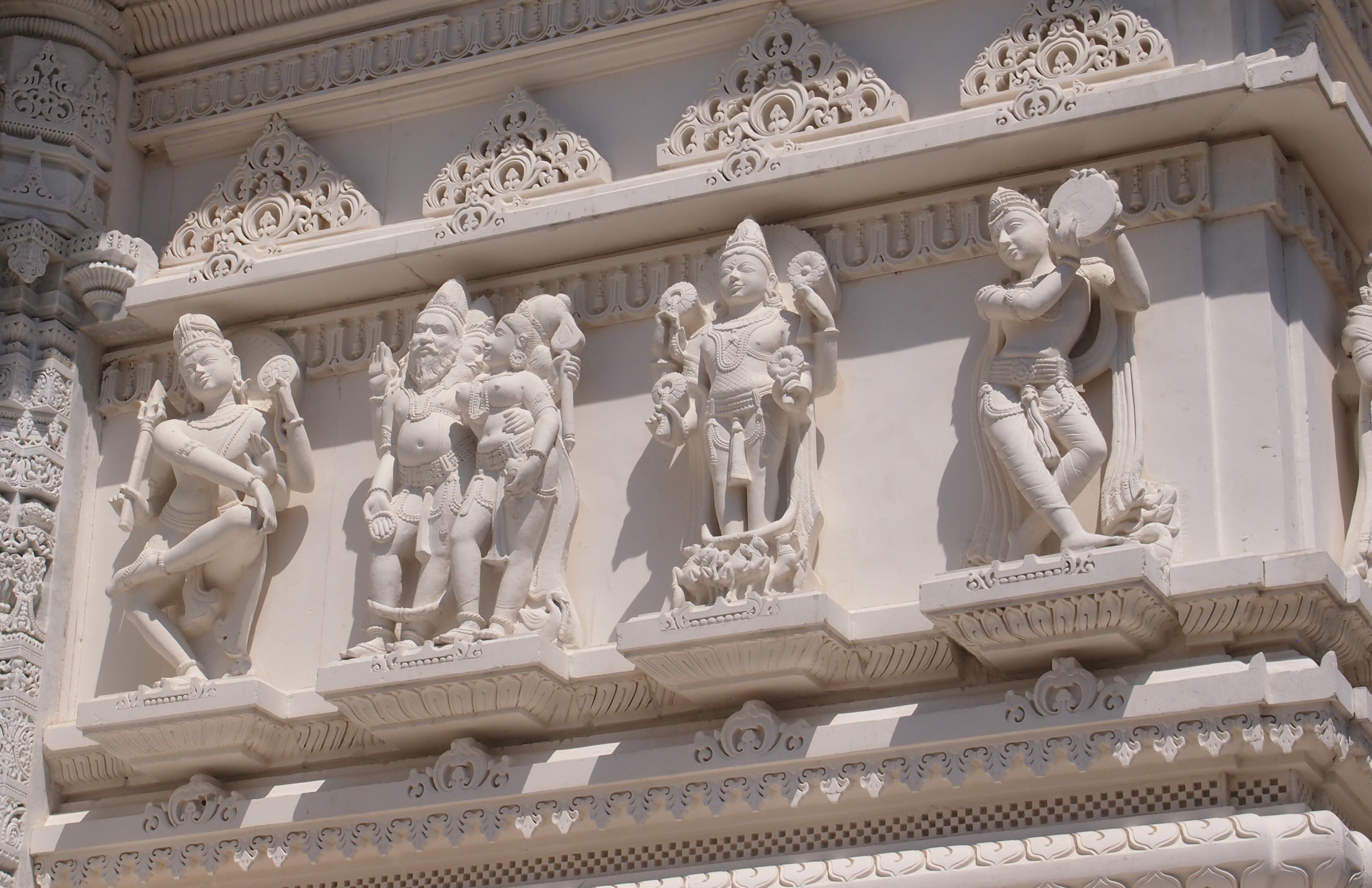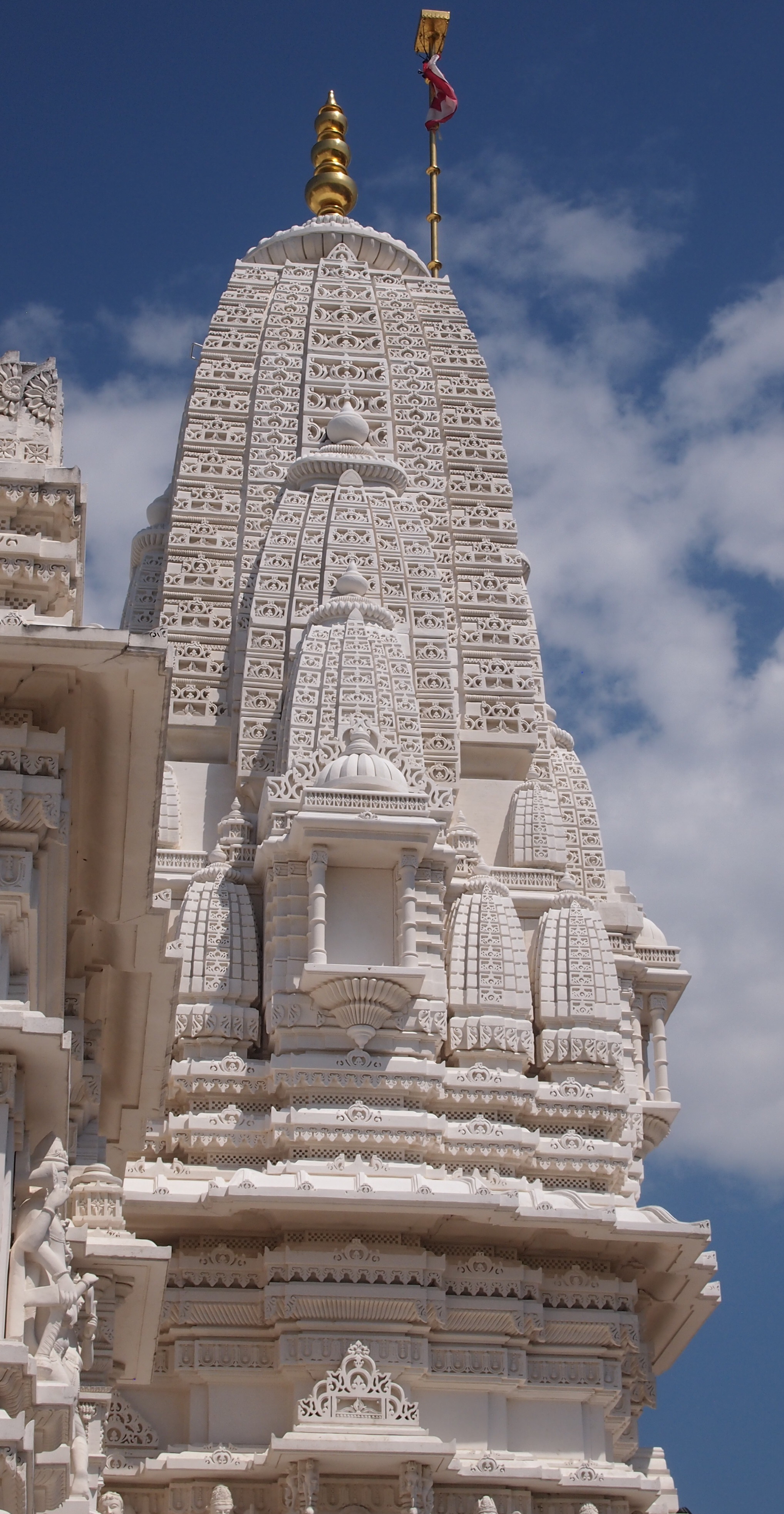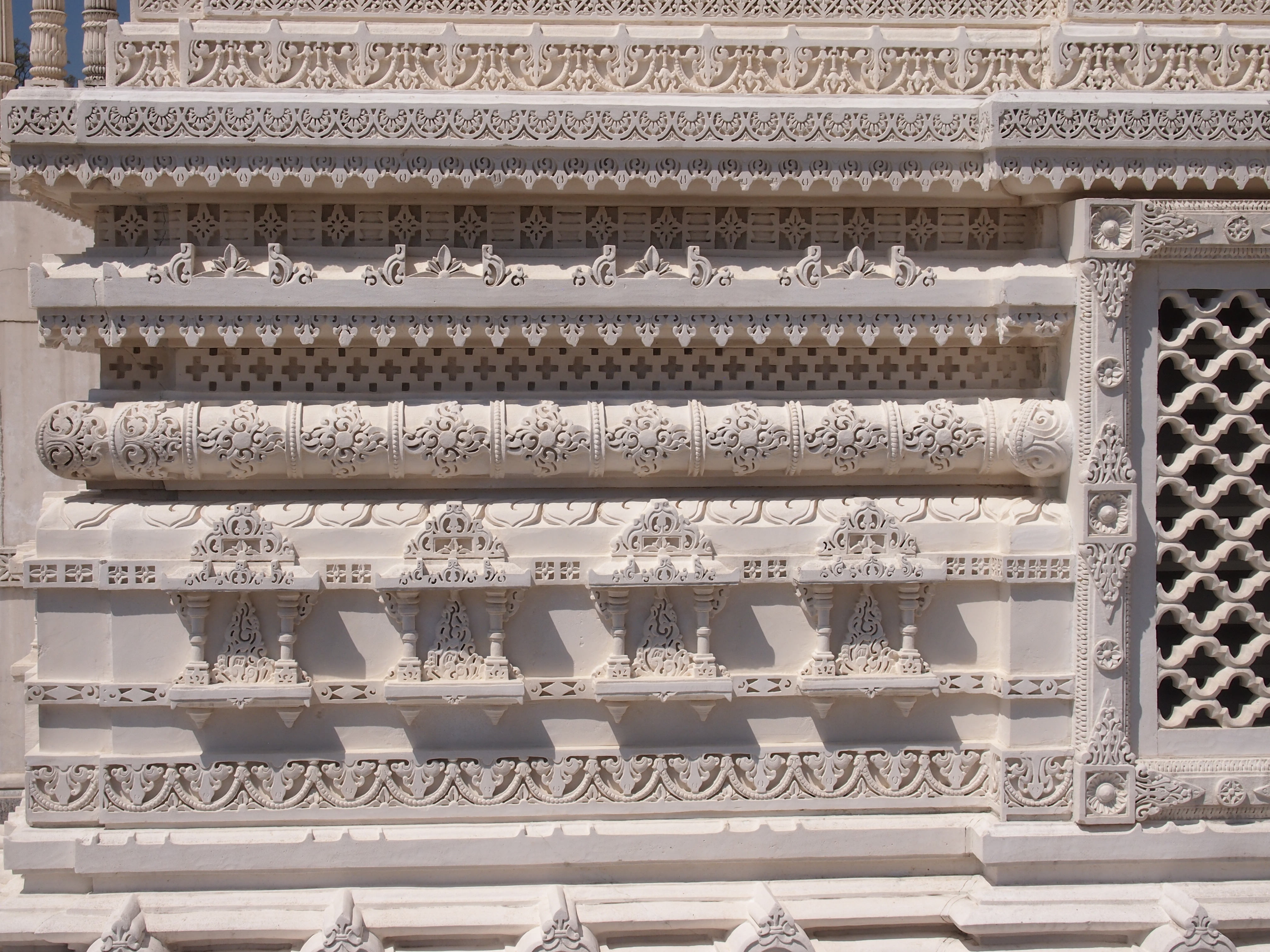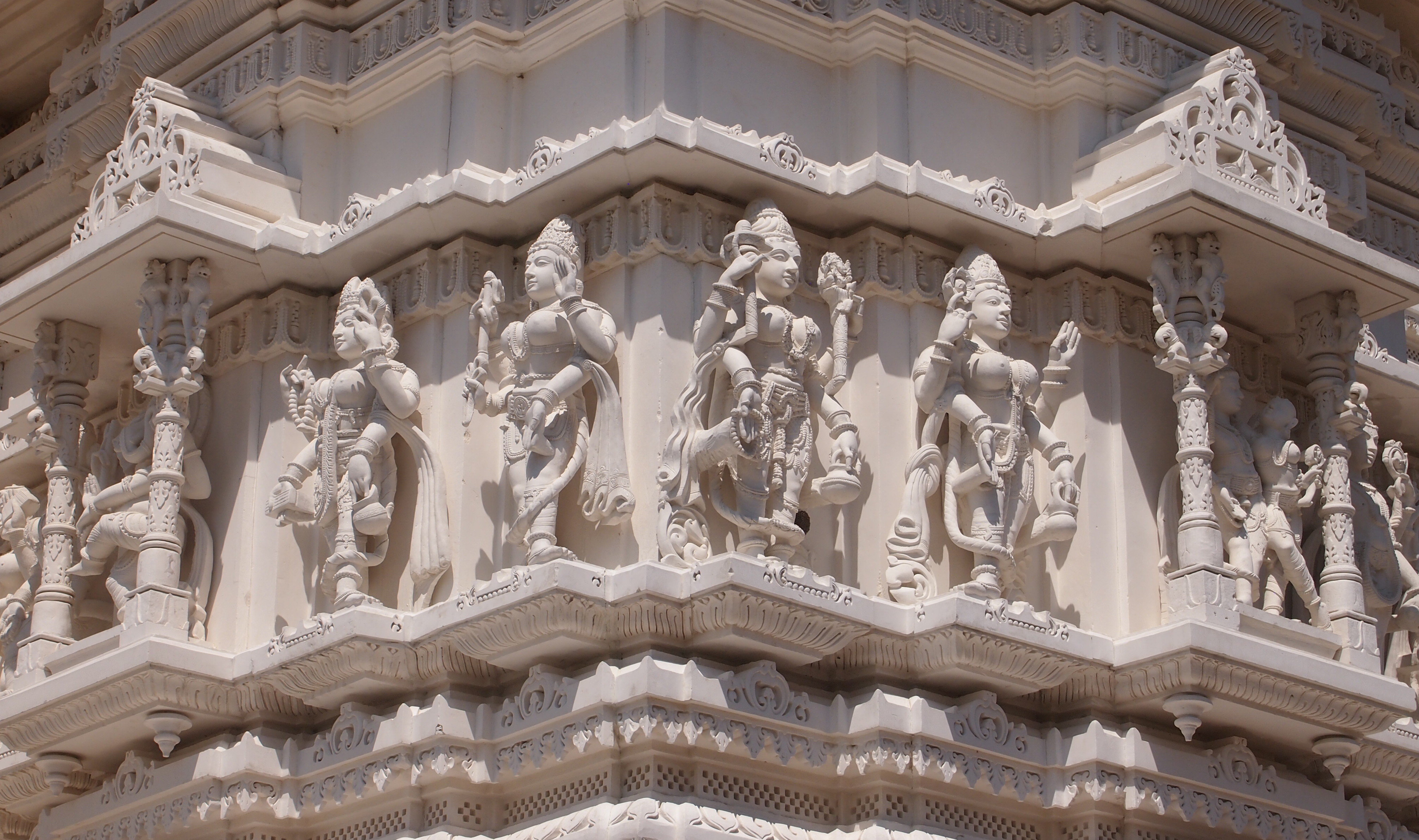BAPS Shri Swaminarayan Mandir, a monumental Hindu temple on 27 acres in suburban Bartlett, Ill., is less than 10 miles from where I’ve lived for most of the 21st century so far. How is it that I never knew about it until a few weeks ago? You imagine that you know your part of the world pretty well, but it’s just a conceit.
BAPS, incidentally, stands for Bochasanwasi Akshar Purushottam Sanstha, so the full name of the site would be the Bochasanwasi Akshar Purushottam Sanstha Shri Swaminarayan Mandir Chicago. I can see why it’s abbreviated. I can’t pretend to know how the group that built the temple fits into the galaxy of Hinduism, though I’ve read that it’s a relatively modern movement, originating in Gujarat state. I wouldn’t mind knowing more, but whatever knowledge I take away from reading about the details of Hinduism tends to evaporate in a short time, sorry to say.
The suburban Chicago temple is just one of a half-dozen such in North America. The others are in metro Atlanta, Houston, LA, and Toronto, and in central New Jersey. Judging by their pictures, each is about as monumental as the metro Chicago temple, though Chicago’s supposed to be the largest. In fact, it’s the largest Hindu temple in North America, at least according to one source. Even if that’s not so important, the place does impress with its size.
On a sunny but not exactly warm day recently, I drove to the BAPS Shri Swaminarayan Mandir for a look. The structure, finished only in 2004, is stunning.
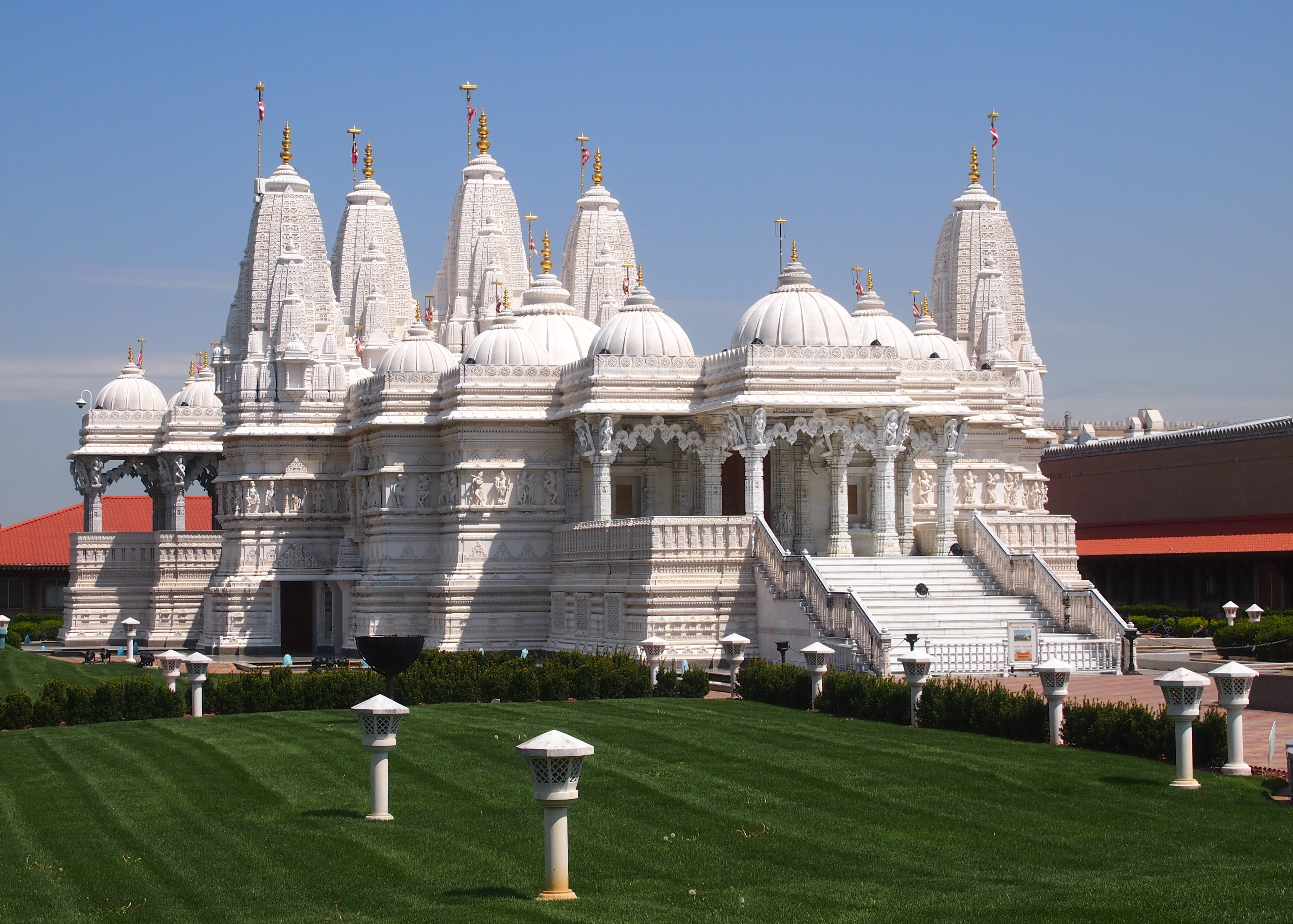
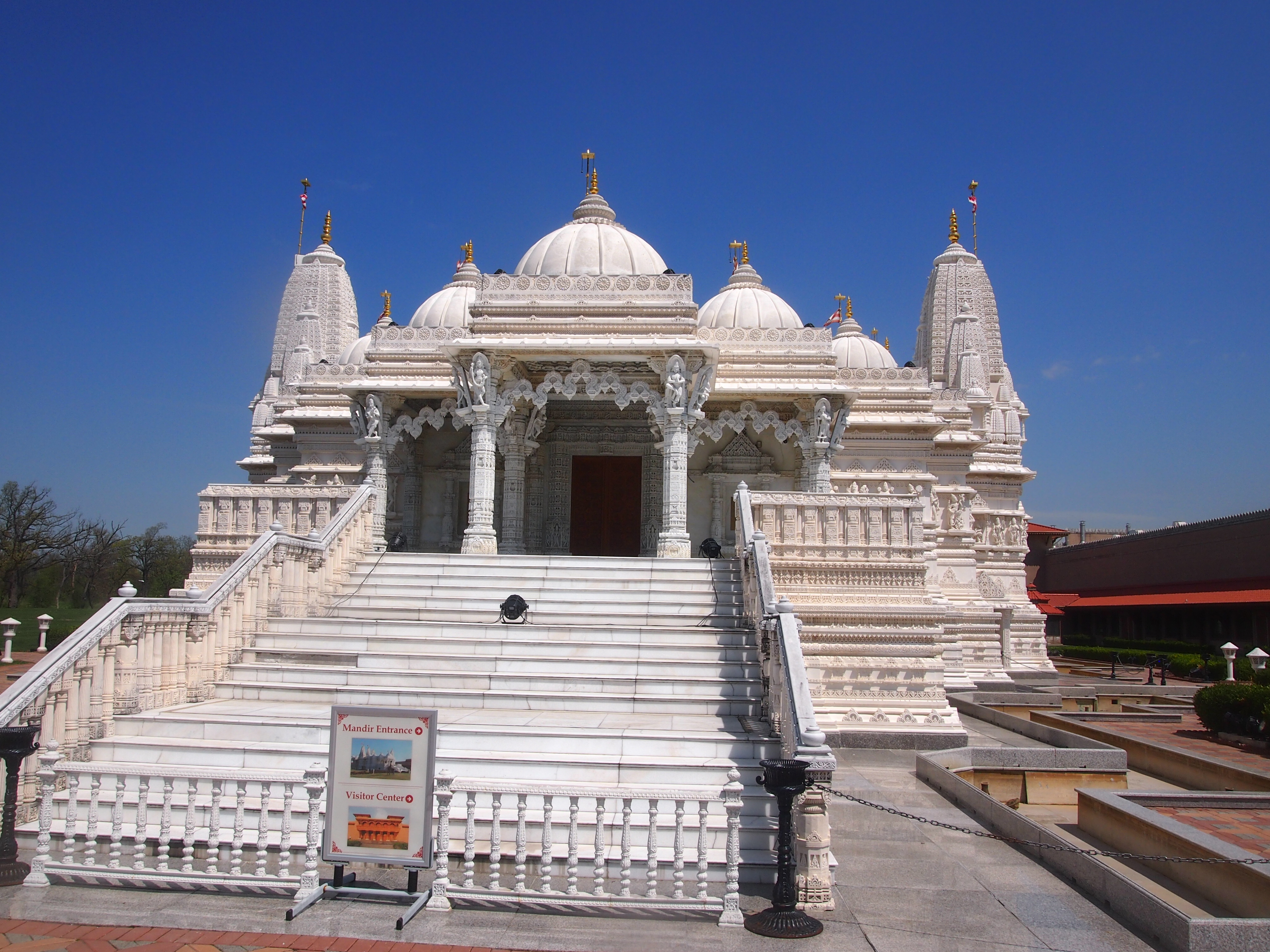 The exterior is limestone, the interior marble and granite. The temple’s web site has a sketch of the structure’s creation, which I’ve edited a bit.
The exterior is limestone, the interior marble and granite. The temple’s web site has a sketch of the structure’s creation, which I’ve edited a bit.
The Carrara marble was quarried in Italy and the limestone was quarried in Turkey.
From there it was shipped to Kandla in western India.
The material was then transported to Rajasthan, where it was hand-carved by more than 3,000 craftsman over a period of 22 months.
The finished pieces were then shipped to a final location for polishing, packaging and numbering before being shipped back to the port in Kandla.
It took two months for a container ship to journey from India to the US.
Upon reaching Virginia, the containers were put on a train to Chicago and then transported to the project site.
Upon arrival at the site, the stones were grouped and classified based on a detailed database of each piece.
The pieces were then assembled together like a massive, three-dimensional jigsaw puzzle.
The finished products of rich carvings are a testimony to the exquisite skills of craftsmen, aided by superb logistics and engineering.
I’ll go along with that last sentence. Even though I didn’t understand the details of what I was looking at, I admire the artistic and engineering skill it must have taken to create the thing.
Next to the mandir is the haveli, a fine building in its own right, featuring some exceptionally intricate wood carving. It serves a number of functions. For my purposes, it included a visitors center, gift shop (with a few postcards) and the entrance to the mandir, which is open to the public.
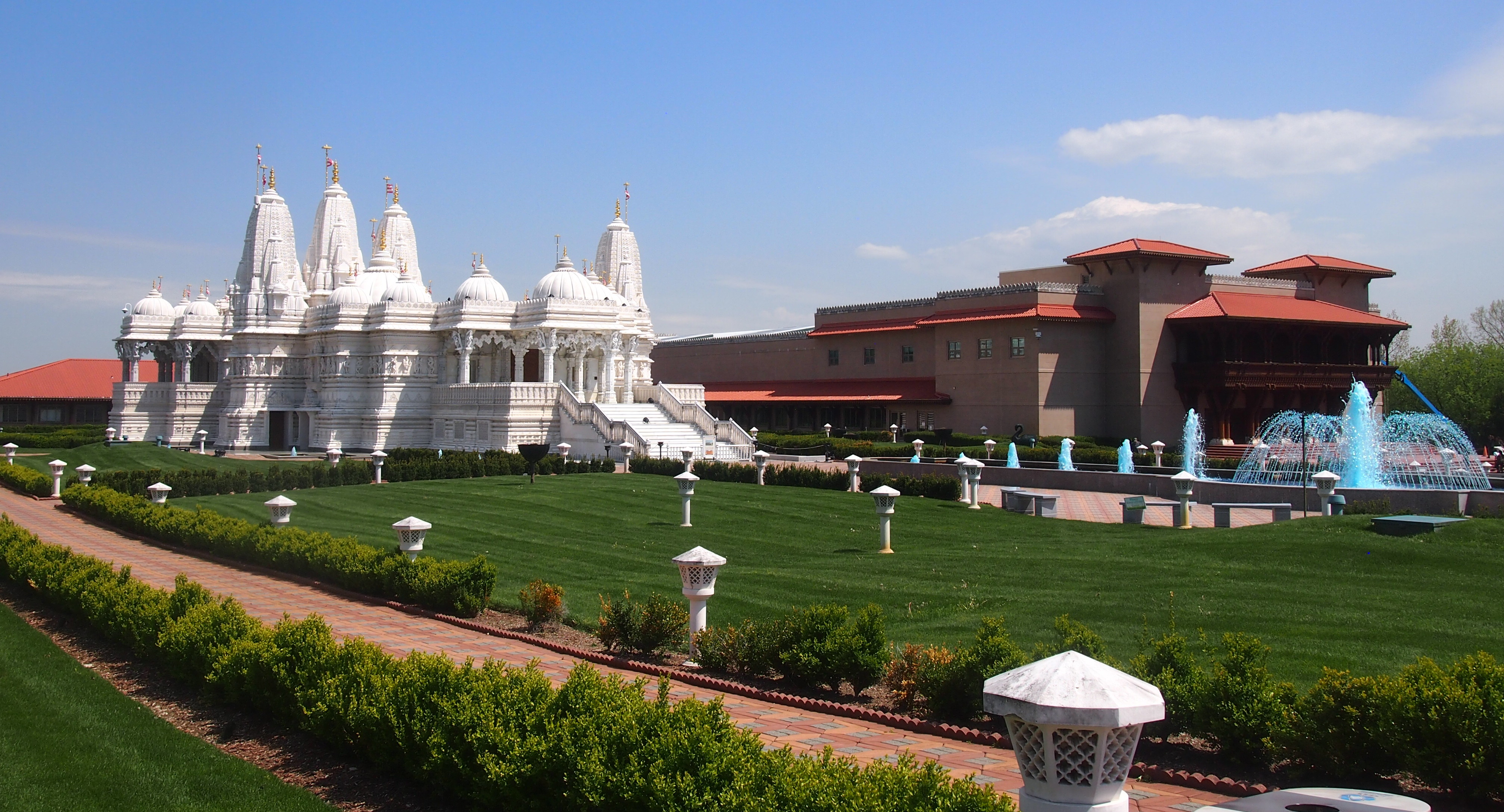
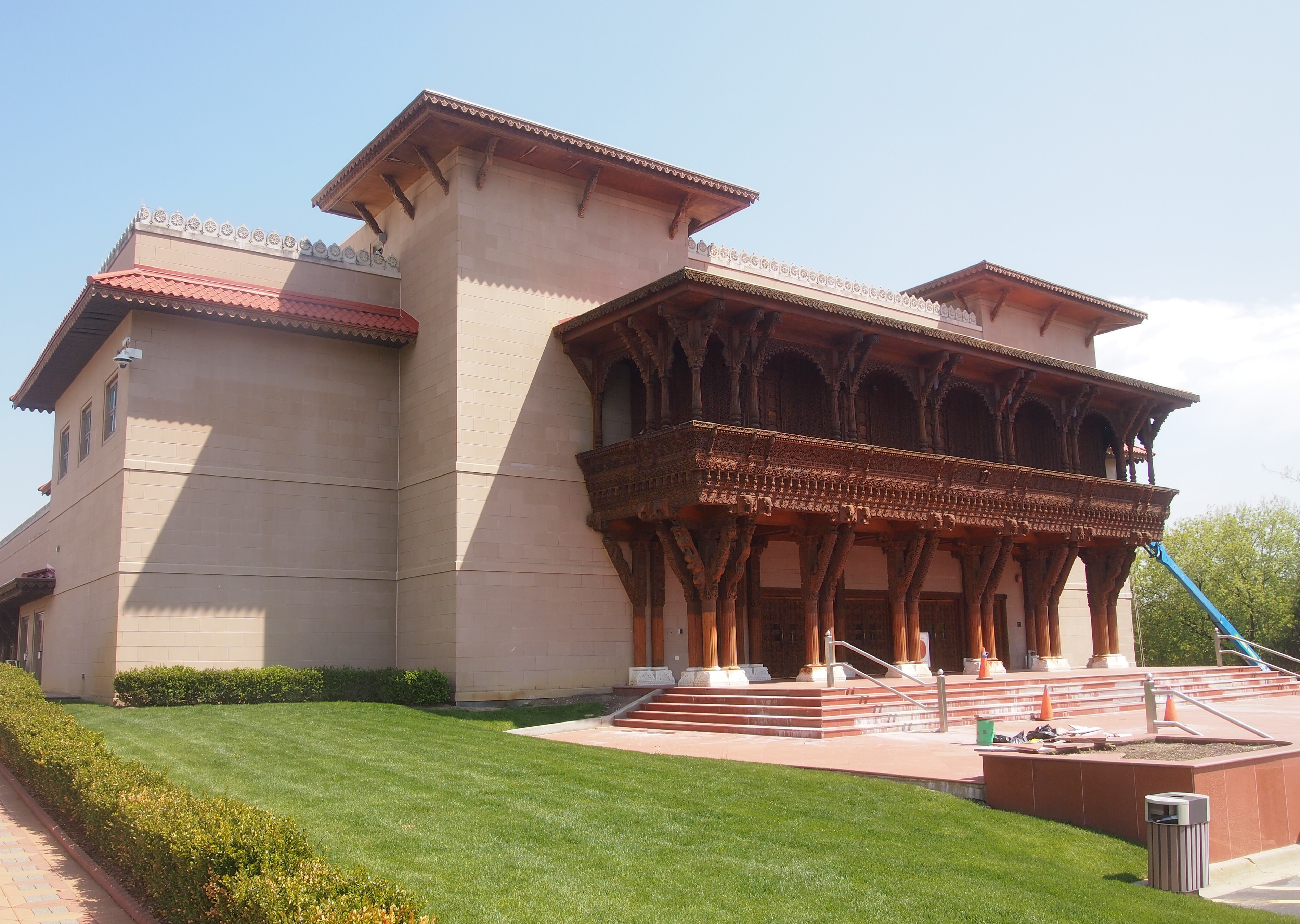 The mandir is accessible via an underground tunnel from the haveli. Exhibits about Hinduism line the wall of the tunnel. The inside of the mandir, marbled and quiet, is an astonishing forest of carved columns and sculpted walls. No photography allowed, but of course pictures do exist.
The mandir is accessible via an underground tunnel from the haveli. Exhibits about Hinduism line the wall of the tunnel. The inside of the mandir, marbled and quiet, is an astonishing forest of carved columns and sculpted walls. No photography allowed, but of course pictures do exist.
I might not ever make to India. Can’t go everywhere. Fortunately, a striking piece of India is within easy driving distance.
